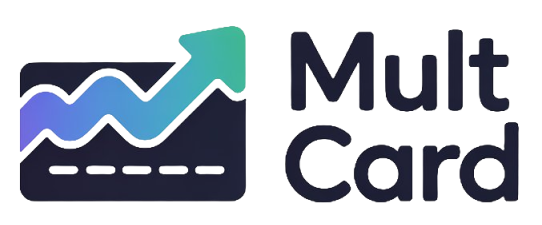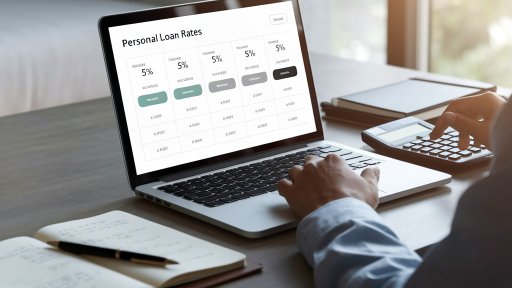Navigating the world of lending can feel overwhelming, but understanding the core requirements is the first step toward securing the funds you need. A personal loan can be a powerful financial tool, offering a lump sum of cash to consolidate debt, finance a large purchase, or cover unexpected expenses. Unlike a mortgage or auto loan, it’s typically unsecured, meaning you don’t need to put up collateral like your house or car.
However, because the loan isn’t backed by an asset, lenders scrutinize your financial profile closely to assess the risk of lending to you. While specific criteria can vary from one financial institution to another, the fundamental elements they evaluate are remarkably consistent. This guide will demystify the process, breaking down exactly what you need to qualify and how to strengthen your application for the best possible terms.
The Core Pillars of Personal Loan Qualification
When you submit a personal loan application, lenders are trying to answer one crucial question: “How likely is this person to pay back the loan on time?” To find the answer, they focus on three primary areas of your financial life. Think of these as the three legs of a stool—if one is weak, it can be much harder to find stable footing. We will explore each of these pillars in detail, giving you a clear picture of what lenders see when they look at your file.
1. Your Credit Score and History: The Foundation of Trust
Your credit history is arguably the most significant factor in any loan decision. It serves as your financial resume, telling lenders how you’ve managed debt in the past. A strong history of responsible borrowing signals that you’re a low-risk applicant.
Why Your Credit Score Matters
Your credit score is a three-digit number that summarizes the information in your credit report. Lenders use it as a quick snapshot of your creditworthiness. A higher score generally indicates lower risk, which often translates into a higher chance of approval, a larger loan amount, and, most importantly, a lower interest rate. A lower rate can save you hundreds or even thousands of dollars over the life of the loan.
What Credit Score Do You Need?
There’s no single magic number for approval, as minimums vary by lender. However, your score will fall into a general range that dictates the types of loans and terms you can expect. Here’s a general breakdown:
| Credit Score Range (FICO) | Rating | Likely Outcome |
|---|---|---|
| 800 – 850 | Exceptional | Highest approval odds with the lowest available interest rates. |
| 740 – 799 | Very Good | Strong chance of approval and access to very competitive rates. |
| 670 – 739 | Good | Considered a prime borrower; good approval chances with reasonable rates. |
| 580 – 669 | Fair | May qualify, but likely with higher interest rates. Some mainstream lenders may decline. |
| 300 – 579 | Poor | Approval is difficult with traditional lenders; may need to look at specialized “bad credit” lenders with very high rates. |
Beyond the Score: Your Credit Report
Lenders will also perform a “hard inquiry” to review your full credit report. They look for specific details, including:
- Payment History: Do you consistently pay your bills on time? Late payments, collections, or bankruptcies are major red flags.
- Credit Utilization: How much of your available credit are you using? Lenders prefer to see a ratio below 30%.
- Length of Credit History: A longer history of responsible credit use can be beneficial.
- Recent Inquiries: Applying for too much credit in a short period can signal financial distress.
2. Income and Employment: Proving Your Ability to Repay
Your credit history shows your willingness to pay back debt; your income and employment status show your ability to do so. Lenders need to be confident that you have sufficient and stable cash flow to cover the new monthly loan payment in addition to your existing obligations.
Stable and Verifiable Income
Lenders look for a consistent source of income. While a traditional full-time job is the most straightforward, other forms of income can also be accepted, provided they are well-documented. This can include part-time work, self-employment income, retirement benefits, or alimony. The key is that it must be verifiable and reliable.
Common Income Documentation
Be prepared to provide proof of your income. The exact documents required will depend on your employment situation, but you should have the following ready:
- Recent pay stubs (usually from the last 30-60 days)
- W-2 forms or 1099s from the last two years
- Recent federal tax returns (especially if you’re self-employed)
- Bank statements showing regular deposits
- Letter from your employer
3. Debt-to-Income (DTI) Ratio: Balancing Your Financial Obligations
Your Debt-to-Income (DTI) ratio is a critical metric that lenders use to assess your capacity to take on new debt. It compares your total monthly debt payments to your gross monthly income.
What is DTI and How is it Calculated?
The formula is simple: DTI = (Total Monthly Debt Payments / Gross Monthly Income) x 100. Your monthly debt payments include your rent or mortgage, auto loans, student loans, credit card minimum payments, and any other loan payments that appear on your credit report. Your gross monthly income is your total earnings before taxes and other deductions are taken out.
Why Lenders Care About DTI
A high DTI ratio suggests that a large portion of your income is already committed to existing debts, leaving little room for another payment. This makes you a riskier borrower. A lower DTI, on the other hand, indicates you have plenty of disposable income to handle a new loan, making you a more attractive applicant.
Most lenders prefer a DTI ratio below 43%, with many favoring applicants with a DTI of 36% or less. You can learn more about how to manage this ratio from financial resources like Investopedia’s detailed guide on DTI.
A Checklist of Common Personal Loan Requirements
To streamline your application process, gather these common documents and pieces of information beforehand.
| Requirement Category | Specific Documents / Information | Why It’s Needed |
|---|---|---|
| Personal Identification | Government-issued photo ID (driver’s license, passport), Social Security number, Date of Birth | To verify your identity and prevent fraud (Patriot Act requirement). |
| Proof of Address | Recent utility bill, lease agreement, or bank statement with your name and address. | To confirm where you live. |
| Income Verification | Pay stubs, W-2s, tax returns, bank statements. | To prove you have sufficient and stable income to repay the loan. |
| Employment Information | Employer’s name, address, and phone number. | To verify your employment status and income. |
| Loan Details | The amount you want to borrow and the intended purpose of the loan (e.g., debt consolidation, home improvement). | To underwrite the loan and understand the risk. |
Factors That Can Strengthen Your Application
If you’re worried about meeting the standard criteria or simply want to secure the best possible terms, consider these strategies:
- Apply with a Co-signer: A co-signer, typically a family member or close friend with a strong credit and income profile, agrees to be legally responsible for the loan if you fail to pay. This significantly reduces the lender’s risk and can help you get approved with better rates.
- Offer Collateral (Secured Loan): While most personal loans are unsecured, some lenders offer secured options where you pledge an asset, like a savings account or a vehicle, as collateral. This can lead to lower interest rates but carries the risk of losing the asset if you default.
- Lower Your DTI Ratio: Before applying, focus on paying down existing debt, especially high-interest credit card balances. This can improve both your DTI ratio and your credit utilization, making your application much stronger.
- Ask for a Reasonable Amount: Be realistic about how much you need to borrow. Applying for an amount that is clearly supported by your income and credit profile increases your chances of approval.
Steps to Take Before You Apply
A little preparation can go a long way. Before you start filling out applications, complete these steps:
- Check Your Credit: Get a free copy of your credit report from a source like AnnualCreditReport.com. Review it for any errors that could be dragging down your score and dispute them if necessary. Understanding your score will help you target the right lenders. You can also monitor your score through services offered by credit bureaus such as Experian.
- Gather Your Documents: Use the checklist above to collect all the necessary paperwork. Having everything on hand will make the application process faster and smoother.
- Prequalify with Multiple Lenders: Many online lenders and banks allow you to prequalify for a loan. This process involves a soft credit check, which does not impact your credit score, and gives you a preliminary idea of the loan amount, term, and interest rate you might receive. It’s the best way to shop around and compare offers without commitment.
Conclusion: Are You Ready to Apply?
Qualifying for a personal loan is a matter of demonstrating financial stability and reliability. By focusing on the core requirements—a solid credit history, verifiable income, and a healthy debt-to-income ratio—you position yourself as an ideal candidate. Take the time to review your finances, gather your documentation, and address any potential weaknesses before you apply.
Being prepared not only increases your chances of approval but also empowers you to secure the most favorable terms available. For a comprehensive overview of your rights and what to look for in a loan agreement, the Consumer Financial Protection Bureau offers excellent guidance on the personal loan requirements you should understand before signing.






